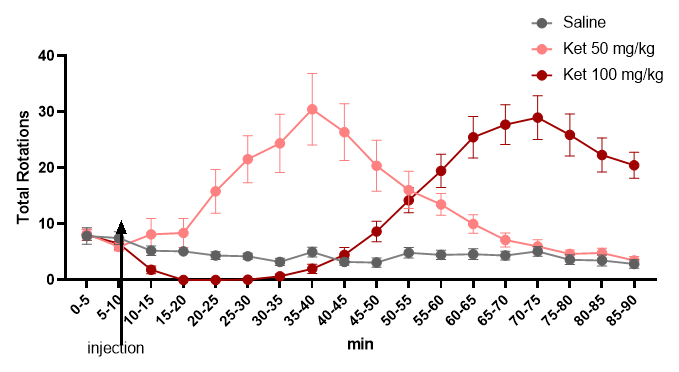This test evaluates the psychotic like effects of a pharmacological challenge (NMDA receptor antagonist) by studying drug-induced stereotypy. This test is applicable to rats and mice.

Young-adult male C57BL/6 mice were placed in an open field arena (50 × 50 × 33 cm under 15 lux illumination), and their rotatory behavior (a measure of stereotypy) recorded for 90 min using Ethovision (Noldus Information Technologies, Wageningen, The Netherlands). At 10 min, mice were injected intraperitoneally with either saline (n=8, gray line), ketamine 50 mg kg−1 (n-=12, pink line) or ketamine 100 mg kg−1 (n-=12, red line). Dots depict group means ±SEM at each time point. A significant time × treatment effect was noted (F (34, 493) = 19.42, P<0.0001) based on a mixed ANOVA with time as repeated measure. Note that in the 100 mg kg−1 treated mice, increased rotational behavior was preceded by a marked hypo-rotative period, likely reflecting a dissociative-anesthesia like effect induced by the higher dose. Unpublished Data, Hadassah BrainLabs.
References:
Chatterjee M, Ganguly S, Srivastava M, Palit G. Effect of ‘chronic’ versus ‘acute’ ketamine administration and its ‘withdrawal’ effect on behavioural alterations in mice: implications for experimental psychosis. Behav Brain Res. 2011 Jan 1;216(1):247-54.
